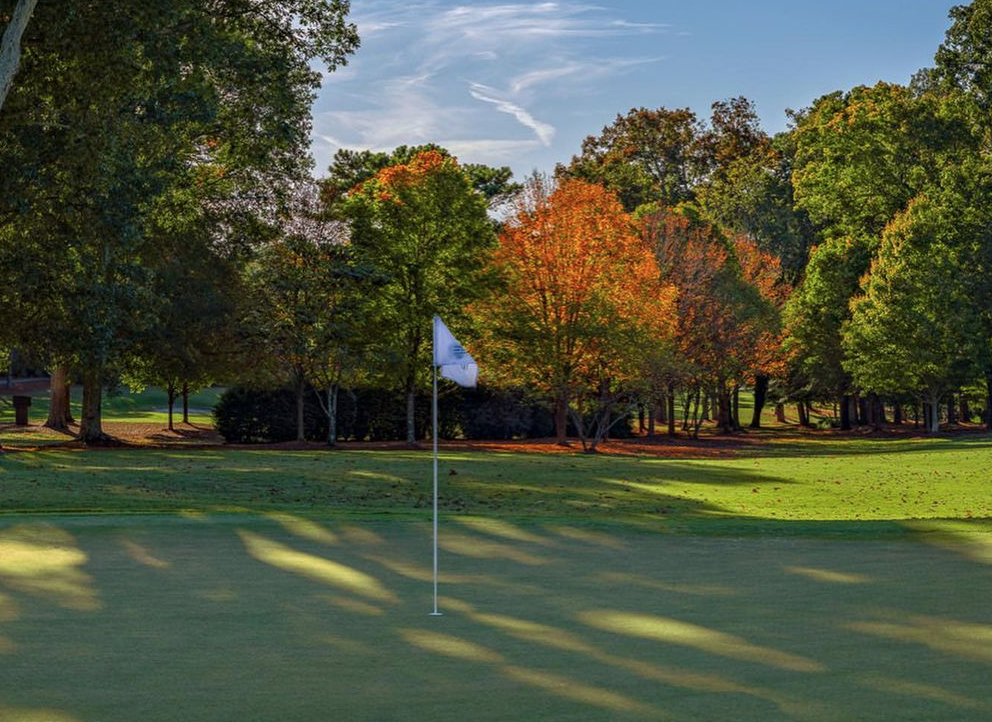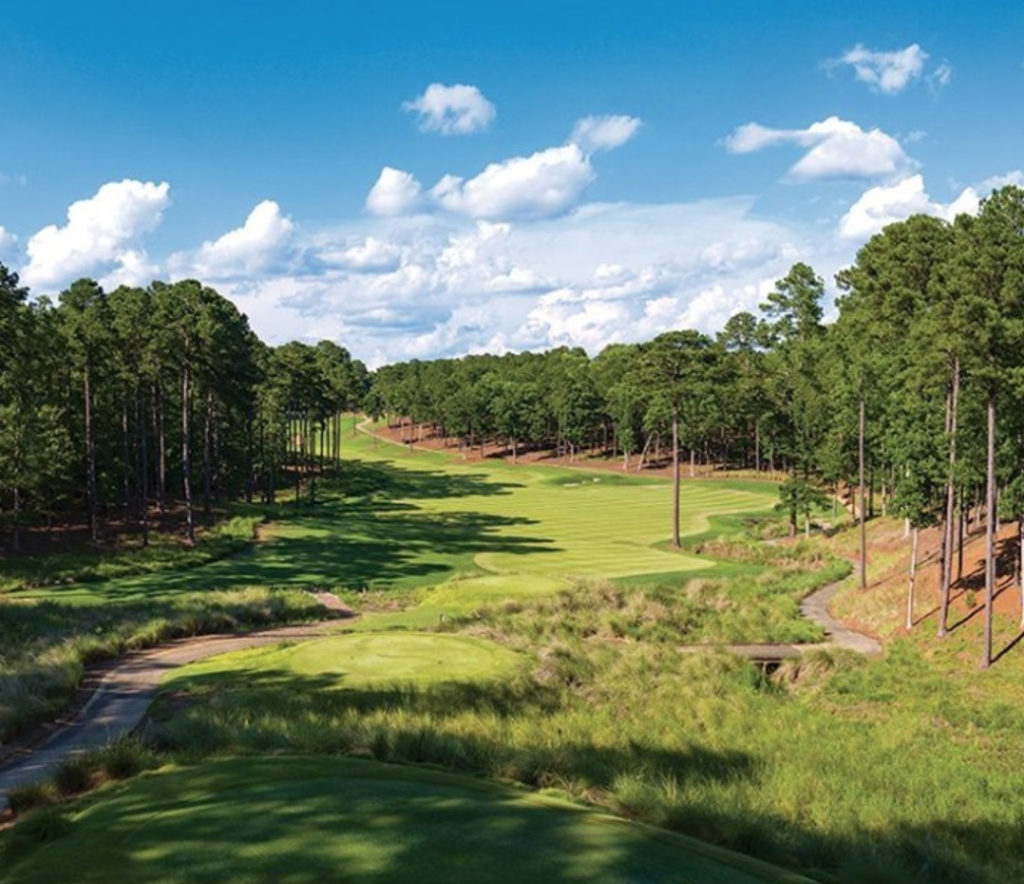
The PGA Tour’s season – a campaign that’s featured plenty of change, both in the Tour itself as well as a fresh-faced list of tournament winners – comes to an end in a familiar place when East Lake Golf Club in Atlanta hosts the Tour Championship from Aug. 25-28.
It’s almost like East Lake provides the Tour with a sense of normalcy, with its tree-lined fairways and traditions and familiarity producing shelter from the storm that professional golf has endured in 2022.
If the 30 players who earned their way into this event through the season and in the first two legs of FedEx Cup Playoffs need a destination or a course to be reminded about the traditions of the PGA Tour, East Lake is happy to oblige.

East Lake Golf Club
East Lake history lesson
It’s the former home club of golfing legend Bobby Jones, and the venue for the 1950 U.S. Women’s Amateur, the 1963 Ryder Cup, and the 2001 U.S. Men’s Amateur. East Lake has been the permanent home of the Tour Championship since 2004 and has become the “Super Bowl” of sorts for the PGA Tour’s players.
The club is the oldest in Atlanta and is located just five miles east of the city’s center. Originally part of the Atlanta Athletic Club (which was founded in 1898), East Lake was born as a second course for the club in 1904.
Golden Age golf architect Tom Bendelow earned the first commission checks for his course layout at the No. 2 course (as East Lake was originally called), with nine holes built in 1906. In the summer of 1907, the course at East Lake was expanded to 17 holes, with the full 18-hole layout in play in 1908.
Then in 1913, Donald Ross was brought in to design the “new” course at East Lake over what Bendelow had fashioned, with Ross’ routing providing for each of the nine holes to conclude at the clubhouse. Ross returned 15 years later to redesign East Lake, and that routing survives as the basic design today.
In 1994, Rees Jones was hired to restore Ross’s original golf course design at East Lake to the layout that’s played today. The only change made since then is the sequencing of holes in 2016, switching the front nine and the back nine so that play would end on a par-5 rather than the par-3 finisher Ross fashioned.
East Lake Golf Club is a private club but is uniquely so. Memberships are sold to corporations, and proceeds from operations, as well as charitable donations from the membership, support the East Lake Foundation and its redevelopment project. That project – spurred by the purchase of the club by a local charitable foundation headed by Tom Cousins in 1993 – had the intent to restore East Lake Golf Club as a tribute to Bobby Jones and the club’s other great amateur golfers and using the renovation as a catalyst for revitalizing the surrounding community.
That model has become the template for the revival of downtrodden communities across the nation – a legacy that will outlast even Jones’ and golf.

Breaking down East Lake
Ross’ design is pleasant yet challenging, with gentle contours amid a relaxing and often serine setting. The trees that line the fairways are sparse enough that the golfer is afforded views of much of the course from several different locations on the property. There is plenty of room off the tees for bombers, with the difficulty at the putting surfaces that rest among well-defined target areas. In true Ross fashion, it’s not about hitting the greens, it’s where you hit them and what you make of those chances.
East Lake is not an especially difficult course. It has no blind shots or maddening quirks though its rolling terrain never quite leaves a level fairway lie. Wind is not much of a factor on this tree-lined, inland site. The Tour Championship offers the course as a par-70 and at 7,307 yards.
There are plenty of great holes at East Lake, and with the FedEx Cup title and its $18 million payout on the line down the stretch of the final round of the Tour Championship, here are a few to which you should pay attention:
The final test on the front nine used to be the course’s closing hole – a famous 232-yard, par-3 that plays uphill. Deep bunkers flank either side of this sloping, two-tiered putting surface and a shot that ends up above the hole will produce one of the toughest putts on the course.
The first island green in America was designed as the 15th hole, which was originally No. 6 at East Lake. It’s a 200-yard par-3 tester with water surrounding the green and its exposed location and placement in the round are intimidating factors.
The championship may well hinge on the closing holes. The par-4 17th is carded at just 423 yards, but trees and bunkers protect the inside corner of this dogleg left and a deep mote bunker fronts the small, firm green. The demands here are for distance control on the approach
The 579-yard, par-5 closing hole provides a bang-for-your-buck finish for the round and the Tour Championship. With water looming in the distance the golfer must decide between a fairway metal off the tee and likely having to layup on the second shot or ripping a driver up the left side in hopes of finding the slope of the fairway that will feed the ball into a spot to reach the green in two. A pair of deep bunkers protect the green that angles away from the golfer and finishes off an excellent grouping of challenges on this hole.
Over the years, the club’s distinctive Tudor-style clubhouse also was restored to the point at which today it is a gathering place for corporate and charitable activities and is laced with memorabilia from Bobby Jones’ illustrious career.
East Lake Golf Club is a collection of fun holes and overall has a classic parkland feel. Walking down the fairways you can’t help but think of a teenage Bobby Jones practicing shots, working on his game and slowly evolving into the Grand Slam champion that he would become.
Its place in history alone makes visiting East Lake Golf Club worthwhile, but luckily the golf course happens to be great, ranked among the best classic courses in the United States.

Other options for golf in Georgia
While you may have a spot of bother getting an invite to play at East Lake Golf Club, don’t fret – there are plenty of other options in Georgia that make a trip there enticing and memorable:
Reynolds Lake Oconee (Greensboro)
About an hour east of Atlanta is peerless Reynolds Lake Oconee, a resort destination and community that rests hard on the eponymous, massive lake. Reynolds offers golfers six courses – five of them open to the public and a sixth for members and their guests. The most ballyhooed of the tracks here is the Jack Nicklaus-designed Great Waters, but there are also two courses fashioned by Bob Cupp (The Landing and The Preserve), one by Rees Jones (The Oconee) and 27 holes laid out by Tom Fazio (The National). There’s a Ritz-Carlton hotel on site as well as plenty of private homes, condos and cabins to facilitate longer stays and bigger groups.
Sea Island Resort (Sea Island)
If you are looking for a place to play plenty of world-class golf in Georgia and enjoy the beach at the same time, look no further than the Sea Island Resort, about a four-hour drive southeast of Atlanta but only about an hour north of Jacksonville, Florida. There are three courses at this finer-than-fine destination – the Seaside Course (a Fazio re-design of the 1929 classic by famous golf course architects Harry S. Colt and Charles Alison) and the Plantation Course and the Retreat Course (both redesigned by Love Golf Design). The Seaside and Plantation are used each year for the PGA Tour’s RSM Classic.
King and Prince Beach & Golf Resort (St. Simons Island)
Another half-hour down the Georgia coast is the King and Prince Beach & Golf Resort and its course that meanders through salt marshes, around a vast lake and across lagoons. Originally designed by Joe Lee and renewed in 2009 by Billy Fuller, King and Prince Golf Club is located on the northern end of St. Simons Island is about 12 miles from the resort. The resort itself is the island’s only oceanfront destination, providing guests with direct beach access.

Reynolds Lake Oconee

